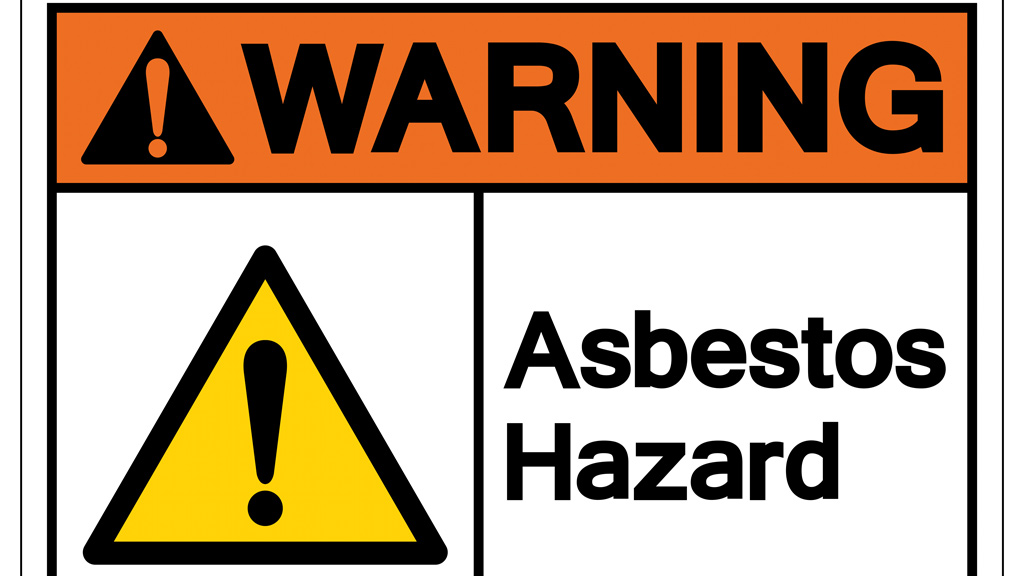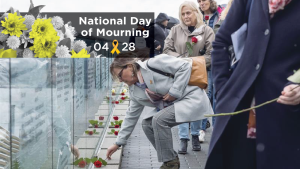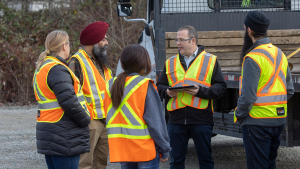Unions, training institutes and private companies in B.C. are stepping in to fill the void created by the lack of any provincial sanctioned training programs for those that work in the asbestos abatement industry as companies are required to meet WorkSafeBC standards and qualifications.
“We are busy,” said Andrew Swan, health and safety trainer at the Finishing Trades Institute of B.C., as two classes of new entrants a week cycle through the facility that carries out hazardous material orientation for its member companies. The Institute handles orientation for company members of the International Union of Painters and Allied Trades, District Council 38 which represents painters, wall and ceiling installers, drywall finishers, glaziers, hazardous material abatement specialists and related trades.
Swan said a difference exists between orientation and training. Orientation is educating employees as to recognize hazards, why they need to take safety precautions and the regulations in place to protect individuals against harm. “I tell them – this stuff will kill you,” said Swan, when goes over the dangers of working with asbestos and outlines Canada’s sorry history of protecting workers as it is the leading cause of occupational health deaths. “We don’t pull any punches.” It is difficult to get individuals for conform to regulations and standards, he said, unless they understand why they are in place. As well as asbestos, he provides information on other hazards such as lead, silica, PCBs and pathogens that can also be lurking around asbestos removal.
After a year, employees can return for a more intensive orientation known as a Level 1 and a Level 2 program after a further year. Students completing the two levels can obtain certification issued through the FTI BC. The higher-level orientation courses deal with issues such as setting up containments around asbestos sites and related safety measures.
Swan sees training as more hands-on and it is the responsibility of the employer to take the educated worker and apply the knowledge at the work site. Unions also have programs in place for first year apprentices. But, a more knowledgeable employee ensures the work is carried out safely and where dangers exist. “Every worker has the right to refuse work, participate, and know,” he said. “But, how can you refuse work if you don’t know?
In the private sector, environmental companies are offering the AHERA courses. The AHERA Building Inspector Training course is aimed at those who do assessments of asbestos on sites. A certified AHERA inspector can determine the presence, quantity, location and content of asbestos containing materials in a building and conducts a physical assessment of the materials condition. The AHERA Worker Training course is geared to those who will be working in asbestos abatement industry.
B.C. borrows its abatement and inspection programs from the U.S. AHERA program, drawing its name from the U.S. Asbestos Hazard Emergency Response Act of 1986, which was enacted to protect students and school employees from exposures in schools and campus. AHERA was implemented under the U.S. Toxic Substance Control Act in 1986. The B.C. courses have been modified to ensure they meet WorkSafeBC requirements on job sites.
Andrew Marshall, principal in RJ & Associates Environmental Consultants, said those signing up for the AHERA courses his firm offers are mainly in the demolition and restoration industries. The trades most often seen in class sessions, according to Marshall, are electricians and plumbers and contractors.
Marshall said information delivered by the courses is advancing the skills of those having to deal with asbestos in the workplace. “The benefit is that it increases the safety on the project site,” said Marshall, whose consulting firm runs monthly training programs in three-day classroom sessions. It can also be the difference between getting a job done without work interruptions such as a stop work order that can shut down a site. “We have had people here (in classes) who have been this for 20 years and they tell us they didn’t know they had to do this (in a certain way). The courses really sharpen their skills and make the work site safer,” he said.
Vancouver Island based AREC Environmental Group also offers the AHERA courses. General manager Scott Conrad said there are numerous benefits to construction members taking the courses but a major consideration is the ability to gain more insight into a project prior to its commencement.
(Some renovations jobs do not require municipal building permits where an assessment may pick up hazardous materials while larger projects can be delayed as some municipalities only require an assessment after a building permit is issued leaving the contractor to deal with surprises).
The AHERA asbestos workers course is geared to those carrying out asbestos abatement. “It satisfies the minimum education requirements for WorkSafeBC for a qualified person,” he said. He estimates that real benefit comes from combining work place experience with enhanced training and it takes approximately two year of working in the industry to be proficient in dealing with hazardous situations encountered.
The price of AHERA building inspectors course offered in B.C. by companies vary, depending on venue rental but cost is between $900-$1,000 for three days of classroom learning. It requires that registrants write a final exam and achieve a 70 per cent passing grade. A certificate is issued by AHERA out of Florida for the inspector’s training program and requires a four-hour refresher course at a cost of $225 at regular intervals. The AHERA worker abatement courses are divided into moderate and high risk and each course costs approximately $750 and again requires a 70 percent pass rate on an exam. There is no certificate issued although the course adheres to AHERA standards. There is no requirement for a refresher course.
One of the recommendations in the 2018, B.C. government report Keeping Workers, the Public and the Environment Safe from Asbestos, is that B.C. move to adopt provincially recognized standards and programs for the training of asbestos abatement workers.










Recent Comments